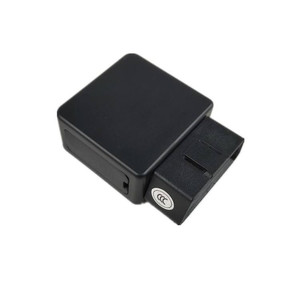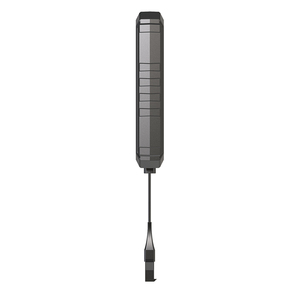(70895 products available)
































































































































































































































The 2 2g refers to a specific frequency that enables communication between mobile devices and cell towers in some regions. These cellular technology systems provide voice services and limited mobile data access, such as GPRS (General Packet Radio Service). GPRS allows features like multimedia messaging (MMS), mobile email, and basic Internet services. 2G network devices, and some newer phones, refer to the generation of wireless communication technology. There are several kinds of 2G; they include the following:
Closed subscriber group:
A closed subscriber group (CSG) is a network explicitly meant for a closed set of subscribers. An SIM card is required to gain access to the CSG network. CSOs are used in private mobile networks (PMNs). CSG is designed to work with a GSM 2G SIM, but it can be integrated with other technologies like fixed telecommunications. CSG, however, has fewer capacities than public networks, but it does provide a good level of security. CSG is less expensive to set up than other networks. CSG has benefits for businesses that would reduce communication costs.
Mobility management entity:
The term "mobility management entity" describes the component of the 2G network that collects and saves location data. It plays a vital role in ensuring that users can switch between different cell towers without dropping their calls. The MME oversees the handoff procedure, ensuring that ongoing calls are transferred between cell towers. The MME also keeps an eye on the 2G SIM card and monitors things like battery life and signal strength. The proper functioning of mobile networks depends on the Mobility Management Entity (MME) working with other system components.
Base station controller:
The base station controller is a critical component of the 2G network architecture. It controls multiple base transceiver stations (BTS) from a distance, overseeing the radio link between the mobile device and BTS. The BSC is in charge of several essential tasks, such as managing handovers between BTS without necessitating a call drop, monitoring radio resources to allocate channels for ongoing calls. The base station controller (BSC) is responsible for maintaining the reliable operation of 2G networks. It enables seamless mobility and efficient use of radio resources.
Home location register:
The home location register (HLR) keeps track of and oversees SIM card data and subscriber information in the 2G network. It performs several vital tasks, such as saving crucial SIM card data like the phone number, services a subscriber uses, and location information. The HLR determines whether a user has the right to make calls. It checks the SIM card data whenever a call is made and connects it to a network.
Visitor location registry:
VLRs, or visitor location registries, are essential parts of the 2G network that collaborate with the home location registry to maintain operational efficiency. When a mobile device connects to a network, the VLR stores and processes location and subscriber data, allowing seamless network service delivery. VLRs improve network efficiency by enabling effective call routing and reducing the number of databases that must be accessed. They simplify and quicken determining a user's rights and location while decreasing latency. The network experience is seamless, and calls are easily connected.
Dual Sim Operation:
With a 2(if compatible), users can enjoy having two separate phone numbers and accounts on one device. Whether for work and personal use, traveling, or staying connected to different networks, a Dual SIM 2 2g phone provides convenient communication flexibility. Users can receive calls on both numbers, easily switch between accounts, and control settings for each SIM independently. Having two SIM cards active on one phone makes it simple to connect with others in ways that best suit unique lifestyles.
Connectivity:
A 2 2g phone connects wirelessly to other devices and accessories. Bluetooth technology allows users to link items like headphones, speakers, smartwatches, and more over short distances without cables. As long as these electronics support Bluetooth, partnerships are quick and easy. Wi-Fi lets a 2 2g phone join the internet when in range of compatible networks. This enables fast web browsing, app downloads, and content streaming. Wi-Fi allows phones to save data used with cellular plans. Wi-Fi Calling means some 2 2g phones can make voice calls over Wi-Fi instead of the mobile network when cell service is poor. Connecting to Wi-Fi for calls can be very helpful in areas with weak reception.
Camera:
Many modern 2 2g phones are now equipped with amazing camera systems that enable users to capture stunning photos and high-definition videos. Whether using the rear camera or front camera, one can take beautiful selfies, record noteworthy moments as they unfold, and even enjoy features like portrait mode for impressive depth-of-field effects and multiple lenses for ultra-wide-angle shots. The convenience of a camera always present in their pocket allows anyone with a 2 2g phone to document their daily adventures and share visual stories with ease.
Easy Apps:
Even though 2 2g phones are made to keep things simple, they can still use apps that do more. Getting apps from a store like the App Store or Google Play lets 2 2g phone users add extra things those apps like social media, music, or games. Some apps work with the phone's GPS to help find places. Those who like to draw can get an art app. A banking app makes it easy to look at money. Being able to download and use apps on a 2 2g phone lets users personalize their device beyond just calling, texting, and basic web browsing. The right apps added can give a 2 2g phone new features that fit what anyone needs.
Advanced Telecommunications:
At the heart of modern mobile network architectures, 2G 2-layer solutions redefine connectivity. With their capability to handle calls, texts, and basic data, they lay the essential groundwork for further advancements. As fundamental building blocks, they ensure seamless handovers and robust connections in diverse network topologies, indicating their crucial role in telecommunications.
Global Positioning and Navigation:
2G 2-layer systems play a significant role in the precise positioning and timing services essential for GPS, GLONASS, and other satellite navigation systems. By providing accurate time reference and satellite communication, these systems are vital for the correct functioning of location-based services in various industries, including transportation, logistics, and emergency services.
Emergency Services and Public Safety:
In critical situations, 2G emergency service calls, particularly when integrated with other communication systems, are lifelines. They ensure that help can be summoned in emergencies, reinforcing public safety and emergency response initiatives. Their reliability and coverage make them indispensable for emergency response and public safety efforts.
Telematics and Machine-to-Machine (M2M) Communications:
Telematics, M2M communications, and other data-driven applications depend on reliable communication. 2G - 2 layer systems enable data transmission between devices, supporting applications such as vehicle tracking, remote monitoring, and smart grid communications.
Remote Monitoring and Control:
Systems incorporating 2G/ Layer architecture facilitate the oversight and management of systems from a distance. For example, industrial plants apply remote monitoring to various sectors, including energy, environment, and healthcare, to conduct surveillance tasks like telemetry and diagnostics.
Environmental Monitoring and Agriculture:
Environment and agriculture applications rely on robust communication for activities like weather observation, conservation efforts, and smart farming. Utilizing systems that integrate architecture, these applications ensure the dependable transmission of data for environmental oversight, resource preservation, and agricultural progress.
Health Care and Biomedical Applications:
Architecture solutions play a major role in medical communications. They support the secure and reliable transmission of data for telemedicine, patient monitoring, and emergency medical services, contributing to improved health outcomes and response. Incorporating this system enhances the overall efficiency of healthcare communications.
Wholesale buyers should pay attention to the features, quality, and size of the portable charges before they make a purchase. The following are important things to consider before buying these chargers in bulk.
Charging speed and capacity
Fast charging and large capacity are essential features that most customers want in portable chargers. Normally, batteries with 2.0 USB ports transfer charging speed up to 1.5A to 2.0A. Buyers should choose power banks that have this transfer speed or higher. The battery capacity should be enough to charge 2G devices for an entire day. Common capacities that do this are 10000mAh, 12000mAh, or even higher.
Simultaneous charging
Customers who use their phones for work and business will prefer power banks that have multiple USB ports. These devices will allow users to charge their phones, tablets, and other electronic devices simultaneously. Multiple USB ports are ideal because they permit simultaneous charging.
Safety features and certifications
All battery chargers should meet the required local and international safety standards. To ensure this, buyers should check the power bank's certifications. More importantly, portable chargers with multiple safety measures will reduce the risk of accidents. These chargers should have protective circuits, temperature control, and detectors for faulty batteries. They should also come with a reliable fuse to prevent short circuits.
Building material
The quality of the materials used to make a power bank affects its overall quality and durability. Plastic and metal are the most common materials used to make portable chargers. Plastic power banks are less durable and tend to get very hot. On the other hand, metal power banks have better heat dissipation. They will keep the internal batteries from getting damaged because of high temperatures. Metal power banks also have better resistance to drops and dents.
Portability and size
Finally, buyers should consider the weight and size of the 2G charger. People want power banks they can easily carry in their pockets and bags. So, wholesalers should buy power banks that have a good capacity to weight ratio.
Q: Can 2.2G phones work without WiFi?
A: Yes, 2.2G phones can work without WiFi. They operate on the 2G network, which is used for making calls and sending text messages. However, internet-based services like email, social media, or website browsing will not be available without a WiFi or data connection.
Q: Is a 2G phone still useful?
A: A 2G phone can still be useful for basic functions like calling and texting. It is simple to use, efficient, and has a long battery life. 2G phones are also affordable and compact. However, they have limitations because, at present, 2G networks are being shut down in many countries. This affects calls, texts, and other functions of the 2G phone.
Q: Does 2.2G mean 2.2 X apps can be installed?
A: The term "2.2G" refers to the generation of mobile network technology, not the apps that can be installed. The number 2.2x means that a specific version of an application can be installed. The ability to install any apps depends on the availability of the app store on the device. The app store has a collection of apps that can be downloaded.
Q: How big is a 2.2G phone?
A: The size of a 2.2G phone varies depending on the model. However, these phones are generally small and easy to carry. The screen size is about 2.0 to 2.4 inches. Because of their compact size, they can easily fit in a pocket.